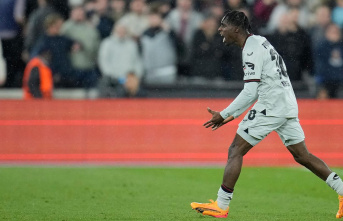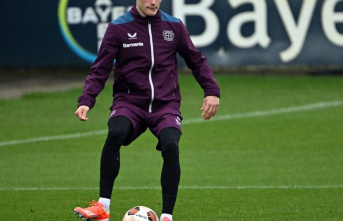Recently at a popular Advent run in northern Germany: "Boaaah, the running belt is annoying. Next time I'll leave it at home." Almost in the same (already somewhat heavy) breath, the two runners behind me are amazed at a like-minded person who, instead of a silly running belt, is carrying an obviously bulging hydration pack on his hump through the forest. Now you can have a fundamental and excellent discussion about how useful additional ballast is when running - especially in the hobby and leisure sector. It sometimes seems adventurous what some runners stuff into their running belt, jacket pocket or said hydration pack for a half marathon. Apparently for fear of the infamous hunger branch. You do not know exactly. Even at events where you get drinks and small snacks at least every five kilometers for your entry fee, many runners have their own provisions on board. In training, on the other hand, you usually look in vain for the brave volunteers at the edge of the track. And if the junior doesn't feel like accompanying dad on his Sunday jog with his bike, a self-sufficient catering strategy must be found.
Basically, running belts are the practical compromise between the smartphone pocket on the arm and the hydration pack on the back. If you only have to stow away the apartment key and cell phone for tracking or entertainment, you can easily get there with the popular pouch for the upper arm. Especially if the training run or competition should not last longer than an hour. Ordinary hobby athletes need neither energy gels nor additional drinks. If longer training runs are on the agenda, it's more worth thinking about some provisions for on the go. And this is where the running belt comes into play. Depending on the manufacturer, energy bars, gels (squeezies for adults) and even small water bottles fit in there in addition to smartphones and keys. That's enough to provide the body with some extra energy and fluids in between.
In short: running belts can be a useful gadget for athletes of all levels. Provided you grab them with your head. Read the stern test to find out how it works, why you should use a measuring tape before you buy it and what fits into the small running belts.
Proviz Reflect360 Laufgürtel
Let's start with a running and multisport belt, which is particularly interesting for early risers and nocturnal runners. With its products, Proviz focuses entirely on the topic of visibility in the dark. Several reflector patterns and the Reflect360 logo are intended to ensure visibility and therefore safety at dawn and after sunset. There are three small pockets for provisions and smartphones. They are all on the inside, which not only makes packing a bit fiddly. Marathoners who like gels or bars should definitely try the Proviz running belt in training. Because even when unpacking at a run, a little instinct is an advantage. With thin running gloves you fiddle around for a long time until you can hold the small snack in your hands and eat it. A clear advantage: The Proviz running belt is unbeatably flexible. There is a comfortable 45 centimeters of space to attach the Velcro fastener. This running belt fits around (almost) every hip. And almost more importantly: it fits like a rock and after a few kilometers we completely forgot we had strapped it on. It nestles comfortably around the waist and also presses the mobile phone so securely against the stomach or back that nothing wobbles when running. Also smart: So that the Velcro surface doesn't stick to other clothes, there's a small fabric cover that can be attached to this surface when not in use. Here's the Proviz Reflect360 running belt
VarioSports also relies on three inner pockets that are connected to each other for its running belt. The Formbelt Plus also has a small zip pocket on the outside. In contrast to the Proviz belt, this running belt is slipped on like pants. In our opinion, the sizes are rather tight. In the test, size M (tester: 177 cm, approx. 75 kg) felt a bit too tight and oppressive in the long run, despite the correctly measured hip circumference and the pleasantly soft and elastic material. Nevertheless, there should be something suitable for everyone in sizes XS to XXL. The printed reflector logo, which is only two centimeters wide, is very discreet. The front zip pocket is almost 20 centimeters wide. That is easily enough for smartphone giants like the iPhone 14 Pro Max. While the inner pockets are less sweat-resistant, the (valuable) contents of the zip pocket stay dry even during longer runs. As a little extra, VarioSports has equipped one of the inner pockets with a plastic carabiner attached with a rubber band. Individual keys can thus be stowed away more securely. During the test run, the Formbelt Plus was (a bit too) tight and secure. Similar to the Proviz product, it was difficult to fumble gels or bars out of the internal pockets. But here, too, practice should make perfect after a few running training sessions. Here the Formbelt Plus running belt is available in different designs.
The flexi-bag is more like a classic fanny pack or body bag. With a pocket size of almost 20 centimeters, it is significantly smaller than the fashion accessory that is currently very popular again. Much more fits in than it appears at first glance. The manufacturer promises that the volume of the belt can be increased by up to 300 percent thanks to the sewn-in elastane. The bag can be stretched up to 15 centimeters in width. We packed in a medium-sized smartphone and some gel sachets without any problems. This should work well for hiking or trekking. From our point of view, however, the bulging flexi-bag is only suitable to a limited extent for running training. Because the actual belt is an elastic band that is only 2.5 centimeters wide. The two ends are clicked together with a standard buckle. No matter how tight you set the elastic: A well-filled flexi-bag bounces up and down on the hips when you walk. If you only need storage space for a handkerchief, a key and some dextrose, the flexi-bag is a good choice. The "little black dress" gets a bonus point for the two flexible loops on the elastic band, to which a race number can be attached. Here you can find flexi-bag in different colors.
The Salomon brand has its roots more in winter sports. But what is good for cross-country skiers should also work for athletes who can do well without a cross-country ski trail. And so the French have been actively involved in the market for running gadgets for a number of years. From our point of view, the Agile250 running belt is primarily aimed at runners who spend a lot of time off-road. This robust belt is clearly oversized for short runs (e.g. during the lunch break). The Salomon belt is the only one in the test that comes with a so-called soft flask, a flexible drinking bottle that holds 250 milliliters of liquid and fits perfectly into the zip pocket. There is also space for solid or semi-liquid provisions already mentioned. A flexible pocket made of stretch material on the back keeps the smartphone dry. Everything that is stowed in the main compartment also stays dry. The pleasantly soft back side made of mesh material absorbs sweat. Salomon has adapted the closure from classic Velcro closures on shoes. Depending on the waist size, the belt can be adjusted in length with a small trick. To do this, a hidden Velcro fastener behind the main pocket that fixes the strap must be undone. Now this can be pulled in both directions and thus shortened or lengthened. Once the desired length has been set, the Velcro fastener must be pressed together again. We tested the Agile250 on a 16-mile trail run. The four energy gels were easy exercise for the high-quality running belt. It also sat firmly and securely without being in the way. The zipper is easy to find even without looking down. The food is ready to eat within seconds. Here's the Salomon Agile 250 Running Belt in black.
The multisport discounter Decathlon also has running and drinking belts in its range. In our test, the Marathon Belt from our own brand Kiprun goes into the race. Similar to the Formbelt Plus, it is available in different sizes. In our case we were spot on with size 2. The best way to get started is with your feet, because the Decathlon drinking belt also comes as a tube. Striking: with the exception of one, all the storage compartments are on the outside. There is no zipper at all. The space available is comparatively plentiful. Two 250 milliliter soft flasks can be stowed in the large compartment. Unfortunately, they are not included in the scope of delivery. Overall, the belt, which is almost twelve centimeters wide, sits comfortably and firmly on the hip. No slacking, no bouncing. From our point of view, the storage compartment for the smartphone is not only tight, but also not an optimal transport solution despite a rubberized opening. The anti-slip stripe on the inside of the belt is nice. Not more. The cord on the inside, with which the belt can be made a little wider or narrower, also seems unnecessary to us. The Marathon Hydration Belt from Kiprun does what it's supposed to do, namely hold flexible drinking bottles. If you can't do without your smartphone while running, you should stay away from this Decathlon model. The Kiprun Marathoin Hydration Belt is available here.
This article contains so-called affiliate links. There is more information here.












